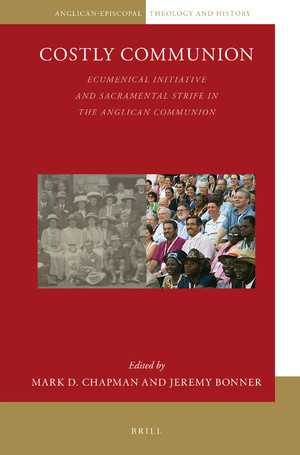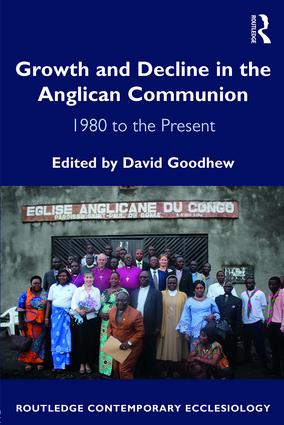Holy War, Unholy Peace: The Chalcedonian Compromise and the Decline of Christianity in the Middle East
Review: Philip Jenkins, Jesus Wars: How Four Patriarchs, Three Queens, and Two Emperors Decided What Christians Would Believe for the Next 1,500 Years. New York: HarperOne, 2010.
When Philip Jenkins first published The Next Christendom in 2002, it swiftly achieved cult status thanks to its prescient vision of the shifting center of gravity of global Christianity from the industrialized First World to the rapidly expanding nations of the Global South. Eight years on, and after the publication of such works as The New Faces of Christianity (2006) and The Lost History of Christianity (2008), Jenkins has chosen for his subject the narrower canvas of a Fifth Century Christian world menaced from without by the Hunic and Vandal hordes and subverted from within by frenzied doctrinal disputes over the human and divine natures of Christ that pitted the patriarchates of Alexandria, Antioch, Constantinople and Rome against one another. The failure of the theological compromise engineered at the Council of Chalcedon (AD 451) to reconcile followers of the Monophysite (One Nature) school – centered on Alexandria – to Catholic Christianity set the stage for the withdrawal of members of some of the oldest Christian churches in Syria and Egypt to ultimate eclipse under the suzerainty of an emerging Islamic state that was willing to afford them religious toleration in exchange for political submission. This, as Jenkins soberingly puts it in his penultimate chapter, is “How the Church Lost Half the World.”
Jenkins’ approach concedes the importance of historical contingency. While the vocabulary of the Catholic West has been shaped by the assumption that Chalcedon was a decisive rebuke to the pretensions of Alexandria and the beginning of the inevitable ascendancy of a “Two Nature” understanding of the person of Christ, Jenkins argues that such ascendancy was far from inevitable. Monophysite theology endured throughout the East, even when Chalcedonian-inclined emperors deposed hostile bishops and imposed episcopal overseers more to their liking. Furthermore, the ecclesiastical history of the Fifth Century, as retold by Jenkins, relegates the Roman primacy to a relatively humble position in the struggle, with few occupants of that office – aside from Leo the Great –enjoying the status of the eastern patriarchates. Yet historical contingency goes only so far. “In one sense,” writes Jenkins, “ancient Christians were exactly right to be so passionate about their causes, if not the means by which they pursued them. Far from being philosophical niceties, the central themes in the religious debates really were critical to the definition of Christianity and to the ways in which the faith would develop over the coming centuries. The Christ controversies did, and do, have immense consequences, for culture and politics as much as for religion.” (2-3)
American – and for that matter English – readers will find aspects of the story to have a contemporary ring, a fact to which Jenkins does not fail to allude (15-16). The eclipse of Alexandria and Antioch, he notes, ensured that the church-state alliance promoted by the western Church would become the model for world Christianity, while the Chalcedonian-Monophysite cleavage ensured that Islam would face little resistance in the lands of Christianity’s birth. While the heated nature of theological debate is all too evident today, the lengths to which the protagonists are willing to go in defense of their position are, thankfully, absent. And yet there is a very real irony in discovering that the forerunners of those who today argue for theological pluralism and the free exchange of ideas were more likely to be found within the imperial administration than among ecclesiastical officeholders. For the leaders of the Church, the preservation – at least on paper – of the ideal of an undivided Church left no room for those whose views were, frequently temporarily, in the minority.
The struggle that faced the Fifth Century Church, Jenkins argues, was not over whether Jesus should be considered divine – that had been resolved at Nicaea – but preventing him from becoming “entirely God.” (19) It was, however, a struggle lacking defined processes, and “the councils were marked by name-calling and backstabbing (both figurative and literal), by ruthless plotting and backstairs cabals, and by the pervasive threat of intimidation.” (22) Such debacles as the infamous Second Council of Ephesus of AD 449 (the “Gangster Synod”) offer a less than happy picture of Christian deliberation. The parade of mutual anathemas, depositions and vigilante ‘justice’ which characterize the era from First Nicea (AD 325) to Chalcedon (AD 451) and beyond is far removed from what we often conceive of as the Early Church. Here one arguably finds the second modern-day comparison, since Jenkins argues that the religiously-inspired instability and violence of the period reflect the increasing inability of the state to regulate private violence. While his assertion that violence is no more in the DNA of Islam than it was in Fifth Century Christianity (30) will be controversial, those Monophysite monks who razed pagan temples, assaulted imperial officials and threatened recalcitrant bishops present unhappy testimony to the mood of the times.
Theology, as Jenkins points out, can be a singularly elusive discipline and at times one could be forgiven for thinking that the distinctions served purely as cover for ecclesiastical political maneuvering. And yet the conflict embodied a very real difference in outlook. Between the poles of an Alexandrian church that celebrated the hypostatic union of the human and divine natures of Christ such that the human elements were subsumed in the divine and an Antiochian church that favored notions of the Logos-sax, or the assumption by Christ of a fully human status, lay a grey area that would provide the basis for depositions of patriarchs and bishops. (51-53) Much of the theological language involved subtle distinctions that made misunderstanding and misrepresentation all too easy.
For Alexandria, with its Greek influences and powerful monastic tradition, the age seemed to offer its patriarchs the opportunity to follow in the footsteps of Athanasius, who had triumphed over the Arians at Nicea, and propagandize the rest of the Christian world. As the secular Roman world trembled from the onslaughts of the pagans and Arian Christians, Cyril of Alexandria carried the day against Constantinople’s Nestorius (a product of Antioch), for the offense of questioning the title of the Virgin Mary as Theotokos (God-bearer), and with the backing of the Emperor Theodosius II oversaw his deposition at the First Council of Ephesus in AD 431. Eighteen years later, the aforementioned Gangster Synod marked the high tide of the crusade against Antioch by Cyril’s successor Eutyches in a council, which, even by contemporary standards, had more the characteristics of a kangaroo court than a synod of bishops, with critics even prevented from taking notes of the proceedings. (187-192)
The death of Theodosius II in AD 450 paved the way for the Council of Chalcedon and the reversal of Alexandria’s run of success. The new emperor Marcian’s sympathies were with the opponents of Eutyches, as were those of Pope Leo. Chalcedon accepted the condemnation of “Nestorianism” (which did not necessarily correspond with the beliefs of its purported founder) at First Ephesus, but rejected the deliberations of Second Ephesus – and its depositions of those who opposed its teaching – in favor of the “in two natures” formula that later came to inform the wording of the Athanasian Creed. (212-214) As a compromise, however, it represented a distinct shift away from the Alexandrian position and one which many Egyptian Christians profoundly resented. From that date, Egypt would begin a process of steady disassociation, while Antioch – hitherto a bastion of Two-Nature theology – would witness the triumph of the Monophysite party in AD 469. Though the imperial authorities would struggle on for another 200 years, their ability to marry the aims of state and church was increasingly constrained. Quoting the contemporary historian Evagrius on the situation in AD 500, Jenkins strikes a surprisingly familiar note:
the Eastern bishops had no friendly intercourse with those of the West and Africa, nor the latter with those of the East. The evil too became still more monstrous, for neither did the presidents of the eastern churches allow communion among themselves, nor yet those who held the sees of Europe and Africa, much less with those of remote parts. (243)
What lessons, then, can we draw from this narrative? Humility, perhaps, about the inevitability of salvation history. Not that God has no purpose, but that the Church often gropes haphazardly towards divine design. At the same time, however, Chalcedon may be seen as the working out of Divine Providence precisely because at the time it seemed so far from inevitable – a political compromise effected against the reality of Monophysite strength throughout the eastern churches. “Somehow, amazingly, the church preserved its belief that Christ was human as well as God. And today, that belief is the standard, official doctrine for the vast majority of Christian institutions – all Catholic and Orthodox believers as well as virtually all Protestants.” (270)
Jesus Wars packs a great deal into less than 300 pages. It comes well supplied with appendices that provide details on the various councils, doctrinal debates and principal protagonists that are helpful to non-specialist and specialist alike. It has much to teach about the process of theological debate and disagreement and cautionary warnings both to those who glorify consensus and those inclined to view every theological battle as one to be fought to the bitter end. The questions are not new; it is the story of salvation history that is ever-changing.









